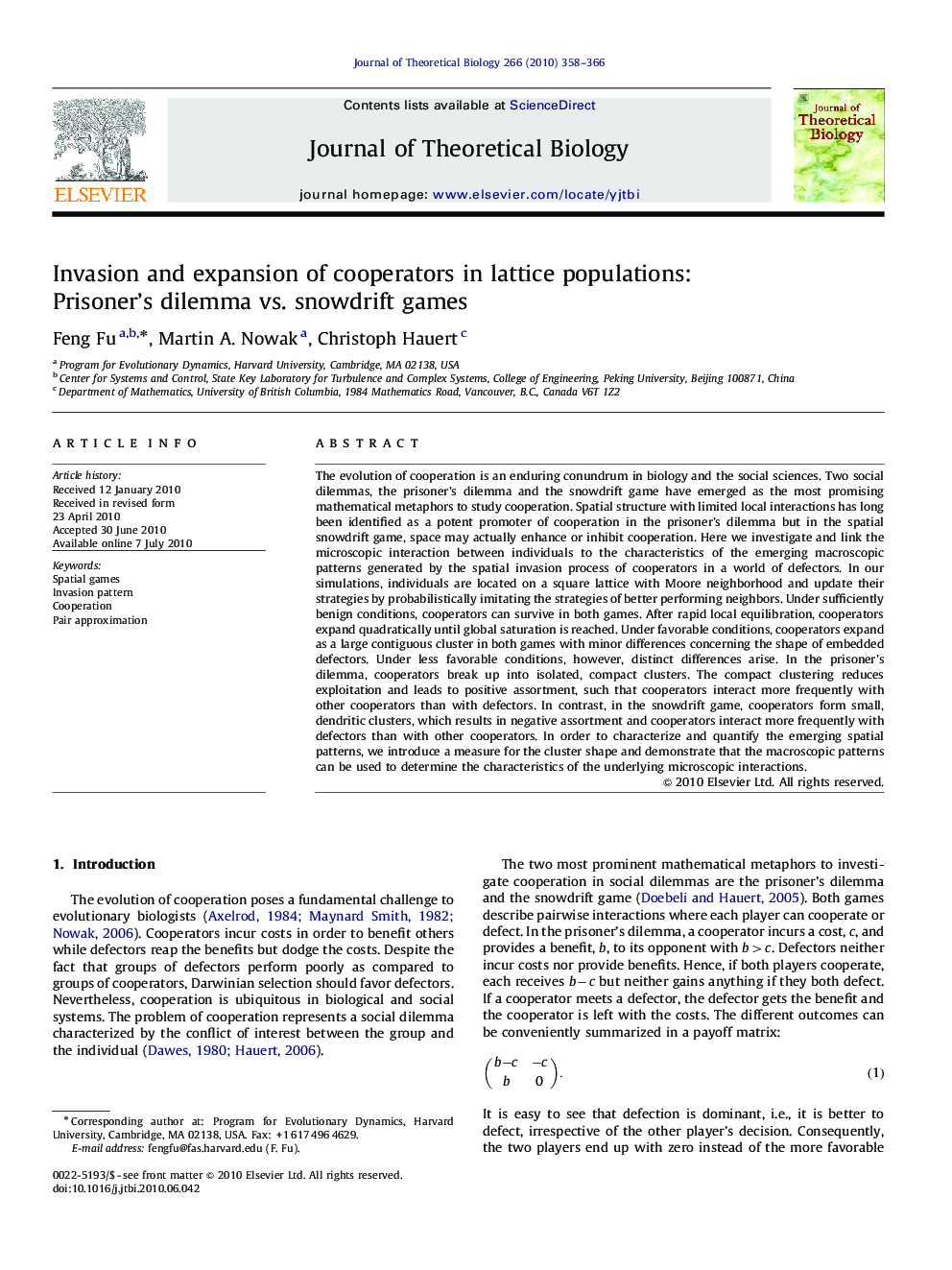| Article ID | Journal | Published Year | Pages | File Type |
|---|---|---|---|---|
| 4497431 | Journal of Theoretical Biology | 2010 | 9 Pages |
The evolution of cooperation is an enduring conundrum in biology and the social sciences. Two social dilemmas, the prisoner's dilemma and the snowdrift game have emerged as the most promising mathematical metaphors to study cooperation. Spatial structure with limited local interactions has long been identified as a potent promoter of cooperation in the prisoner's dilemma but in the spatial snowdrift game, space may actually enhance or inhibit cooperation. Here we investigate and link the microscopic interaction between individuals to the characteristics of the emerging macroscopic patterns generated by the spatial invasion process of cooperators in a world of defectors. In our simulations, individuals are located on a square lattice with Moore neighborhood and update their strategies by probabilistically imitating the strategies of better performing neighbors. Under sufficiently benign conditions, cooperators can survive in both games. After rapid local equilibration, cooperators expand quadratically until global saturation is reached. Under favorable conditions, cooperators expand as a large contiguous cluster in both games with minor differences concerning the shape of embedded defectors. Under less favorable conditions, however, distinct differences arise. In the prisoner's dilemma, cooperators break up into isolated, compact clusters. The compact clustering reduces exploitation and leads to positive assortment, such that cooperators interact more frequently with other cooperators than with defectors. In contrast, in the snowdrift game, cooperators form small, dendritic clusters, which results in negative assortment and cooperators interact more frequently with defectors than with other cooperators. In order to characterize and quantify the emerging spatial patterns, we introduce a measure for the cluster shape and demonstrate that the macroscopic patterns can be used to determine the characteristics of the underlying microscopic interactions.
